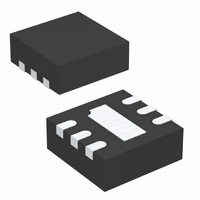LTC3025EDC#TRMPBF Linear Technology, LTC3025EDC#TRMPBF Datasheet - Page 8

LTC3025EDC#TRMPBF
Manufacturer Part Number
LTC3025EDC#TRMPBF
Description
IC REG VLDO 300MA MICROPWR 6DFN
Manufacturer
Linear Technology
Datasheet
1.LTC3025EDCTR.pdf
(12 pages)
Specifications of LTC3025EDC#TRMPBF
Regulator Topology
Positive Adjustable
Voltage - Output
0.4 ~ 3.6 V
Voltage - Input
0.9 ~ 5.5 V
Voltage - Dropout (typical)
0.045V @ 300mA
Number Of Regulators
1
Current - Output
300mA (Min)
Operating Temperature
-40°C ~ 125°C
Mounting Type
Surface Mount
Package / Case
6-DFN
Lead Free Status / RoHS Status
Lead free / RoHS Compliant
Current - Limit (min)
-
Other names
LTC3025EDC#PBF
LTC3025EDC#PBF
LTC3025EDC#PBF
Available stocks
Company
Part Number
Manufacturer
Quantity
Price
LTC3025
APPLICATIONS INFORMATION
temperature range. The X5R and X7R dielectrics result in
more stable characteristics and are usually more suitable
for use as the output capacitor. The X7R type has better
stability across temperature, while the X5R is less expensive
and is available in higher values. In all cases, the output
capacitance should never drop below 0.4μF , or instability
or degraded performance may occur.
Thermal Considerations
The power handling capability of the device will be limited
by the maximum rated junction temperature (125°C). The
power dissipated by the device will be the output current
multiplied by the input/output voltage differential:
Note that the BIAS current is less than 300μA even under
heavy loads, so its power consumption can be ignored
for thermal calculations.
The LTC3025 has internal thermal limiting designed to
protect the device during momentary overload conditions.
For continuous normal conditions, the maximum junction
temperature rating of 125°C must not be exceeded. It is
important to give careful consideration to all sources of
thermal resistance from junction to ambient. Additional
heat sources mounted nearby must also be considered.
For surface mount devices, heat sinking is accomplished
by using the heat-spreading capabilities of the PC board
and its copper traces. Copper board stiffeners and plated
through holes can also be used to spread the heat gener-
ated by power devices.
The LTC3025 2mm × 2mm DFN package is specifi ed as hav-
ing a junction-to-ambient thermal resistance of 102°C/W,
which assumes a minimal heat spreading copper plane. The
actual thermal resistance can be reduced substantially by
connecting the package directly to a good heat spreading
ground plane. When soldered to 2500mm
1 oz. copper plane, the actual junction-to-ambient thermal
resistance can be less than 60°C/W.
8
(I
OUT
) (V
IN
– V
OUT
)
2
double-sided
Calculating Junction Temperature
Example: Given an output voltage of 1.2V, an input voltage
of 1.8V to 3V, an output current range of 0mA to 100mA
and a maximum ambient temperature of 50°C, what will
the maximum junction temperature be?
The power dissipated by the device will be equal to:
where:
So:
Even under worst-case conditions, the LTC3025’s BIAS pin
power dissipation is only about 1mW, thus can be ignored.
Assuming a junction-to-ambient thermal resistance of
102°C/W, the junction temperature rise above ambient
will be approximately equal to:
The maximum junction temperature will then be equal to
the maximum junction temperature rise above ambient
plus the maximum ambient temperature or:
Short-Circuit/Thermal Protection
The LTC3025 has built-in short-circuit current limiting as
well as overtemperature protection. During short-circuit
conditions, internal circuitry automatically limits the output
current to approximately 600mA. At higher temperatures, or
in cases where internal power dissipation causes excessive
self heating on chip, the thermal shutdown circuitry will
shut down the LDO when the junction temperature exceeds
approximately 150°C. It will re enable the LDO once the
junction temperature drops back to approximately 140°C.
I
I
V
P = 100mA(3V – 1.2V) = 0.18W
0.18W(102°C/W) = 18.4°C
T = 50°C + 18.4°C = 68.4°C
OUT(MAX)
OUT(MAX)
IN(MAX)
= 3V
(V
= 100mA
IN(MAX)
– V
OUT
)
3025fd














